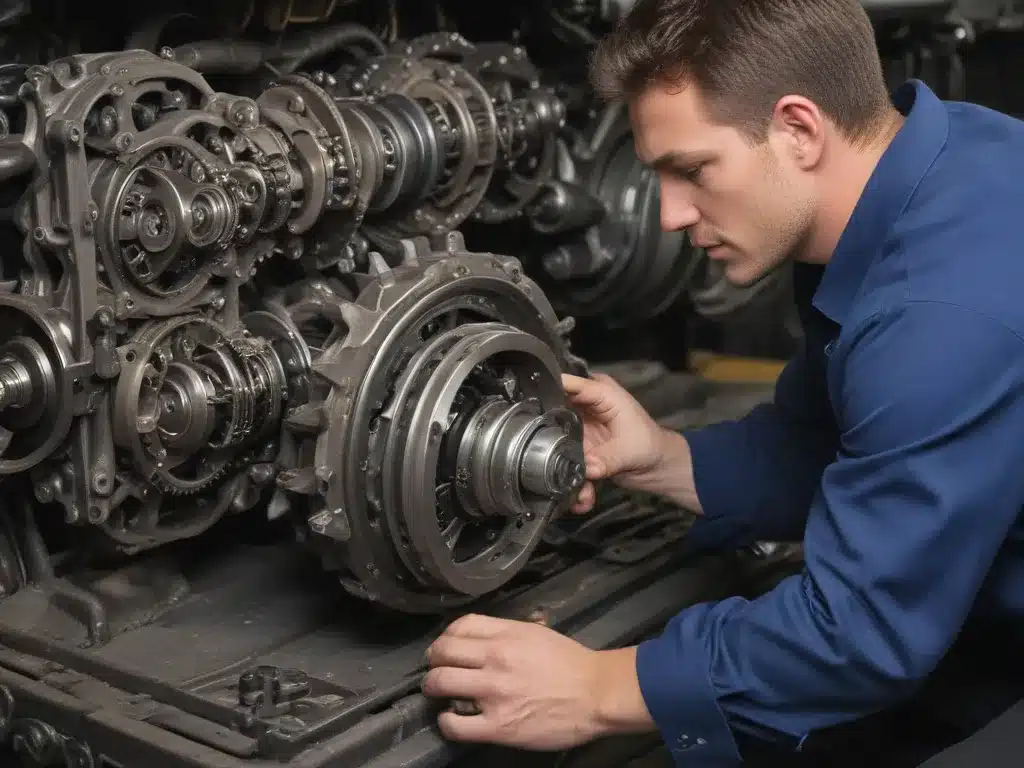
Understanding Transmission Issues
As a seasoned auto enthusiast, I’ve encountered my fair share of transmission troubles over the years. The transmission is the unsung hero of your vehicle, silently shifting gears and transferring power from the engine to the wheels. But when things go awry, it can be a real headache. That’s why I’m here to share my expertise and guide you through the common issues you might face with your transmission.
Let’s start with the telltale sign of trouble – gears slipping. This can be a frustrating experience, where you step on the gas and feel the engine revving, but the car doesn’t seem to be accelerating as it should. Gears slipping can be caused by a variety of issues, from low fluid levels to worn-out clutches or bands. It’s important to address this problem promptly, as it can lead to further damage and expensive repairs down the line.
One common culprit for gear slippage is low transmission fluid. The fluid acts as a lubricant, helping the gears and other components operate smoothly. If the fluid level is low, the parts can start to grind against each other, causing the gears to slip. This is an easy fix – simply top up the fluid to the recommended level, and you may be back in business. Of course, if the fluid is old and dirty, it might be time for a full fluid change.
Diagnosing Transmission Problems
But what if the fluid level is fine, and the gears are still slipping? Well, the issue could be more serious, such as a problem with the clutches or bands inside the transmission. These components are responsible for engaging and disengaging the gears, and if they’re worn or damaged, it can lead to that dreaded gear slippage.
To diagnose the underlying cause, I’d recommend taking your vehicle to a trusted mechanic. They’ll be able to perform a thorough inspection, including a transmission fluid analysis and possibly even a road test to pinpoint the problem. Don’t try to tackle this one yourself unless you’re a seasoned DIYer – transmission repairs can be complex and dangerous if you don’t know what you’re doing.
Once the mechanic has identified the issue, they’ll be able to provide you with a plan of action. This might involve a transmission flush, a rebuild, or even a complete replacement, depending on the severity of the problem. It’s important to weigh the costs and benefits of each option, as a full transmission replacement can be a significant investment.
Preventing Transmission Troubles
Of course, the best way to deal with transmission problems is to prevent them in the first place. Regular maintenance is key, including routine fluid changes and inspections. The recommended service interval for transmission fluid can vary, but a good rule of thumb is to change it every 30,000 to 60,000 miles, or as specified in your owner’s manual.
During these maintenance visits, your mechanic will also be able to check for other potential issues, such as worn clutches or bands, and address them before they turn into a bigger problem. It’s a small price to pay to keep your transmission running smoothly and extend its lifespan.
Real-World Examples
I’ve seen my fair share of transmission troubles over the years, and some cases have been more dramatic than others. Take, for example, the time I helped my buddy Steve with his old Chevy pickup. He was complaining about his gears slipping, and when we took a closer look, we found that the transmission fluid was practically sludge. Turns out, Steve had been neglecting his maintenance routine for far too long, and the consequences were dire.
We ended up having to completely rebuild the transmission, which was a major undertaking. It took us weeks of hard work, but in the end, we got the old truck running like new again. Steve was relieved, but he also learned a valuable lesson about the importance of regular transmission maintenance. Now, he religiously changes the fluid and keeps an eye on any potential issues, and he’s been trouble-free ever since.
Another case that stands out in my memory was when I helped my neighbor, Karen, with her Honda Accord. She had been noticing a strange whining noise coming from the transmission, and she was worried that it was a sign of something more serious. After a quick diagnostic, we discovered that the problem was a failing transfer clutch, which was causing the gears to slip under load.
Fortunately, Karen had been proactive and brought the car in at the first sign of trouble. We were able to replace the faulty component and get her back on the road in no time. She was relieved to have avoided a more costly repair, and she’s been a loyal customer ever since, always bringing her car to my shop for regular maintenance and checkups.
The Importance of Transmission Care
The moral of these stories is clear – taking care of your transmission is crucial for the long-term health and performance of your vehicle. It’s easy to overlook this unsung component, but neglecting it can lead to costly and time-consuming repairs down the line.
I can’t stress enough the importance of staying on top of your transmission maintenance. Whether it’s regular fluid changes, inspections, or addressing any issues as soon as they arise, taking a proactive approach can save you a lot of headaches (and money) in the long run.
So, if you’re noticing any signs of trouble with your transmission – like gears slipping, strange noises, or erratic shifting – don’t hesitate to bring your car in for a checkup. The team at AutoOilAndFluid.com are experts in transmission troubleshooting and repairs, and we’re always happy to lend a hand. Together, we can keep your vehicle running smoothly and confidently on the road.


